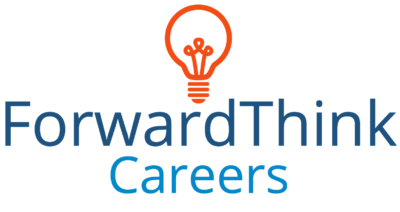

It’s a familiar tale. You see a great job posted online, so you throw together your resume and cover letter and click submit. You’re buzzing with excitement and eagerly await a response.
Then…nothing. Crickets.
You do this again and again, reminding yourself that it’s a numbers game, right? After weeks or months of radio silence, you throw up your hands in frustration.
This, my friends, is the legendary Resume Abyss. An amorphous pit of nothingness, it swallows up even the most attractive resume.
How did the resume abyss come about, and what the heck do we do about it?
Before the internet, companies would receive only a few dozen resumes per position…by mail, of course. HR departments were able to open and read each application and then pass along the best ones to the hiring managers. If you weren’t right for the position, you’d received a polite rejection letter, signed by an actual human being.
Cue the dot com era and the advent of online job boards, and everything changed very quickly. Since you can now apply for a job with a click of a button, companies receive hundreds of resumes per position. And because no HR department has the manpower to go through each application individually, they enlist the help of an applicant tracking system (ATS) to do the heavy lifting.
Electronic Rejectors
Applicant tracking systems are programmed to rank applications based on a pre-determined algorithm, thereby tossing out more than half of all applications. This means there’s a very good chance your resume is never seen by a live human.
On top of that, because employers know they’ll get inundated with resumes once they post a job online, they often hold off on posting and FIRST look to their network. Aside from using social media, they’ll encourage their employees to send them referrals. According to Jobvite, referrals are still the number one way people get hired. These unlisted job opportunities are what’s know as the “hidden job market.”
So how do you avoid getting sucked into a resume black hole…and instead uncover the hidden job market?
In lieu of doing a traditional job search, conduct a company search. Most job seekers start their search by going to the online job boards to “see what’s out there.” They’ll apply for jobs they really aren’t right for at companies they could care less about. No wonder it’s so difficult to convey enthusiasm in a cover letter and resume.
A better approach is to do a targeted search on companies you’re interested in and start building relationships with people who work there. It doesn’t matter if there are current job openings at these companies. Remember, not all openings are posted online. Hiring managers might start by asking for referrals, especially if their company has an employee referral program.
As you begin your research on companies, here are some questions to consider:
• Do you want to work for a small, medium-size or large company?
• What industries are you interested in targeting?
• What products or services would your ideal company offer?
• What would their mission statement look like?
• How would you describe you ideal work environment?
• Do you prefer an open floor plan with lots of collaboration or a more siloed atmosphere with greater autonomy?
Upon answering these questions, it’s wise to put together a list of 15-20 companies that you feel an authentic connection with.
What’s the best way to research companies?
Aside from LinkedIn, sites like Glassdoor, Vault and Indeed can be helpful. You can even do a Google search on your geographic area and industry. (“Top green tech companies in Seattle,” for example.)
Check out their website and social media pages in order to get a sense of their work culture, growth potential, etc. Also, do searches on Google News and industry blogs to see what’s said about them.
Relationship Building
Once you’ve narrowed down your list, you can use the LinkedIn advanced search function to find employees at these companies and reach out to them. Look for peer-level employees and potential hiring managers within appropriate departments. If anyone is a 2nd-degree connection in your network, see if your 1st degree-connection can make an introduction for you.
If not, send a personalized LinkedIn connection request. You don’t need to ask for a job or even ask for help. It’s about expressing your genuine interest in the work they’re doing at their company and highlighting similarities in your backgrounds.
Once they connect with you, continue the conversation and see if they’d be willing to do a quick, “informal” informational interview by phone or over coffee. Of course, not everyone will respond or have time to chat. That’s ok. Keep moving forward.
The Power of LinkedIn Groups
LinkedIn Groups can be another great resource for facilitating these conversations. Join Groups related to your city and industry and also see which Groups employees at your target companies belong to — and join those too, if appropriate.
You can direct message fifteen Group members per month without being a 1st-degree connection. By engaging in Group discussions and starting conversations of your own, you can build relationships with like-minded professionals who could potentially refer you to an opportunity.
One Very Important Note
Before connecting with anyone on LinkedIn, it’s critical to make sure your profile showcases you in the best light. You want to make the right impression as you build these relationships. Here are some tips:
• Have a professional-looking, smiling photo.
• Make sure all of the main sections (headline, summary, work experience, skills, and education) are complete and demonstrate your unique skills and accomplishments.
• Check your privacy settings to ensure your profile is visible to the public.
That way when people click on your profile, they’ll have a clear sense of what roles you’d be right for and how you could positively contribute to their organization.
Resume Abyss…Be Gone!
So instead of firing off resume after resume, put your efforts into building and maintaining those professional relationships at your target companies. That way you’ll stay top-of-mind when an opportunity arises.
If someone is willing (and eager) to walk your resume down to HR, you can avoid the applicant tracking system and thus save yourself from that unforgiving pit of gloom.



